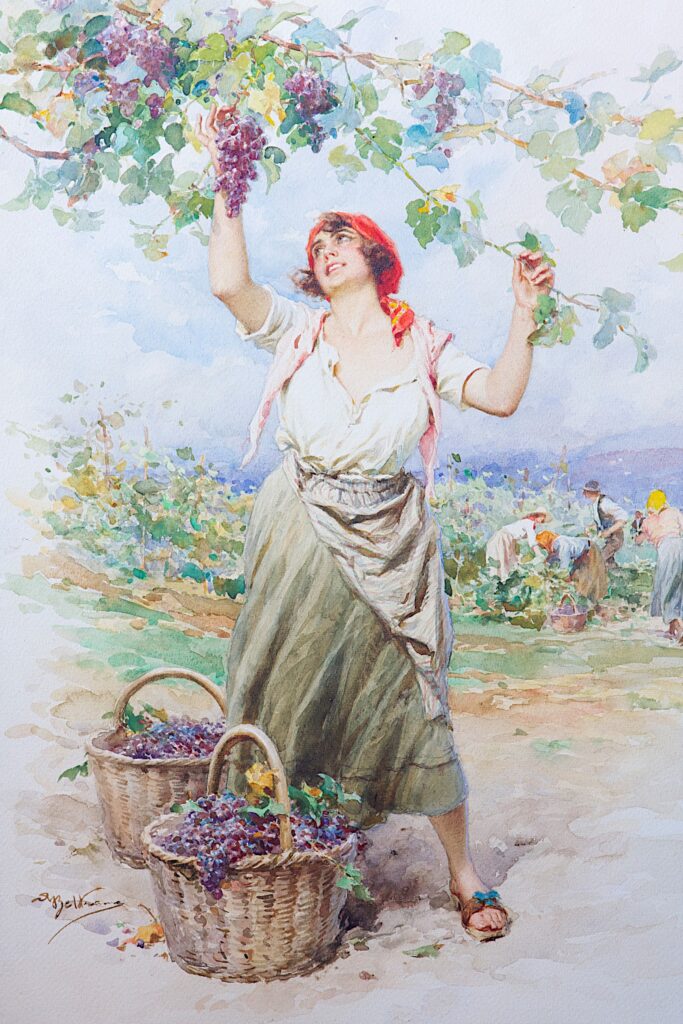New Database Available Online: Achille Beltrame’s “Rough Drafts” for the Anonima Grandine Calendars
12 January 2024
Alongside posters and following conventional practice, Generali also employed other mediums for advertising. One prominent example of these are calendars, popular since the 19th century and often illustrated by leading artists.
One such example is the so-called “wall calendars”, better known as illustrated almanacs (as they have always been referred to in company parlance), used by Generali’s Anonima Grandine di Milano subsidiary. From the First World War to the early 1930s, almost all of these were entrusted to the painting prowess of Achille Beltrame, famous for the vast quantity of illustrations he produced for the La Domenica del Corriere weekly newspaper.
Generali launched its policies to cover hailstone damage in 1836, limiting it initially to a few provinces in modern-day Lombardy, Veneto and Emilia-Romagna. In 1889, the company decided to close this policy division, instead founding a new company in Milan in March 1890, the “Società anonima di assicurazione a premio fisso contro la grandine” (“Anonymous Fixed-Premium Insurance Company Against Hailstones”). This autonomous subsidiary was granted use of the agency network of its parent company.
Beginning in the early 20th century, the new company relied primarily on almanacs dedicated to farming and fieldwork to advertise itself, printed by Gustavo Modiano, Milan. Until 1914, the primary images in the calendars were produced by different artists, many of them anonymous; then, for around 15 years, they were entrusted to the painting prowess of Achille Beltrame.
One of the keys to categorising the graphic projects and paintings carried out by Beltrame over the course of his long career, including the sketches for the Anonima Grandine calendars, was the discovery of a notebook in which he jotted down, year after year, the projects he had been commissioned to carry out, the titles, and in many cases, who had commissioned him and how much he had been paid.
This made it possible to identify 16 works produced for Anonima Grandine from 1915-1920 and from 1923 onwards. The paintings for the calendars from 1916-1920 have been preserved (four samples out of five identified, with the only exception that of 1916 of which the corresponding almanac is preserved) and the paintings for the calendars of 1922-1923, 1925-1929, 1931-1932 and 1941-1942 (nine pieces out of 11 identified, all except the one in 1942, which without any indication of the title/subject it has not been possible to identify, and the 1929 almanac).
Beltrame’s paintings from 1916-1918 and 1920 are dominated by references to the war, tempered by the idyllic and peaceful atmosphere of the villages and farmers, while his second series, from 1923 onwards, is dedicated in its entirety to the rural environment and various agricultural activities.
Enjoy! You can access the database here.

